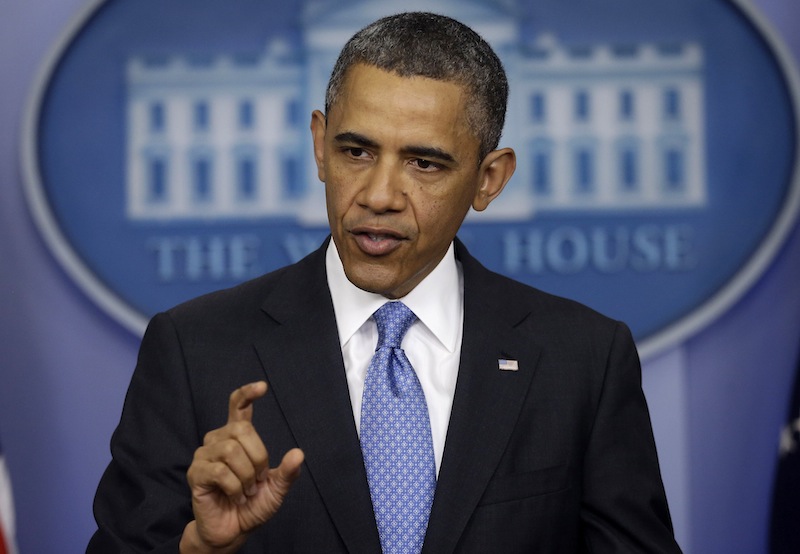The three years since the Affordable Care Act passed — 2011, 2012 and 2013 — have seen the slowest growth in health care spending since 1965, when the statistic began being consistently tracked, according to a new White House report.
That’s great news, but the source of that trend is important. For the last couple years, most experts have credited the Great Recession for much of the decline. It makes sense: When times are tough, people are going to do what they can to minimize spending on everything, including health care.
But the second goal of Obamacare, beyond expanding health coverage to the uninsured, was getting health care costs under control. Health care spending had grown by an average annual rate of 3.9 percent between 2000 and 2007, before dipping to 1.8 percent between 2007 and 2010. According to the new report, the average annual rate of growth from 2011 to 2013 dropped still further, to 1.3 percent.
At some point, the White House needs to prove that the law is achieving that objective. According to the report released Wednesday, they think they have the evidence to say it’s starting to. Jason Furman, chairman of President Obama’s Council of Economic Advisors, explained why in a briefing with a small group of reporters.
The case is built on three parts.
1. Evidence that some of the drop in the growth rate of health care spending is structural, as opposed to cyclical
This makes sense intuitively. The recession ended in 2009, but health care spending has continued to slow its annual growth. So the persistence of the trend is one marker.
In addition, according to the report, health care price inflation is also slowing down. (The price of individual health care goods and services is different from overall spending on health care.) The personal consumer expenditure price indices are down to a 1.8 percent annual average growth rate since Obamacare passed — down from a 2.8 percent average annualized rate of growth from 2007 to 2010. Health care prices wouldn’t be affected by the struggling economy the way outright spending (which can be held down by people seeking to spend less on health care) would be, Furman said.
The other marker is Medicare’s average annual spending growth, which tends to be more isolated from the broader economy because it’s government-funded, Furman said. Medicare average spending growth has been flat — literally 0 percent — since 2010.
“It’s taken people time to realize just how structural the change has been. Two years ago, I think there was more of a controversy and debate as to whether the slowdown in health costs was just caused by the Great Recession,” Furman said. “But we know that it’s not all the story.”
2. Obamacare has already done tangible things to slow health care cost growth.
While not as ballyhooed as the coverage expansion, Obamacare included real reforms that cut spending — particularly in Medicare, because the government already oversees its finances. The Congressional Budget Office estimated that the federal government would save $17 billion in fiscal year 2013 through cuts to Medicare Advantage payments to private insurers and adjustment in payments to providers. Spread over the three years since the law was passed, that accounts for an average annual 0.2 percentage point reduction in health care spending growth over that time, according to the White House.
Other reforms are likely to have an effect, though unmeasured for now, on spending growth, Furman said. The federal government has started penalizing hospitals for high readmission rates. The law created groups known as accountable care organizations, comprised of health care providers who will share savings (or lose money) based on whether they deliver quality care. Down the road, the administration should be able to gauge their impact on spending.
3. Historical precedent says that changes in Medicare spending will lead to changes in private insurance spending.
This is the most nebulous variable in the equation. But Furman and the White House cited recent research on the “spillover” effect on the kind of reforms to Medicare that Obamacare initiated. According to that research, when Medicare cuts provider payments, the private insurance industry on average cuts its own payments by 77 percent of that amount. Another study found that every dollar of Medicare savings resulted in 55 cents in private insurance savings.
So, according to Furman, if you take the 0.2 percentage point reduction through the Medicare payment cuts and apply it to the private sector, you get a 0.5 percentage point reduction in overall health care price inflation that can be linked to Obamacare — a significant contribution to the decline in price inflation cited above and therefore the total spending slowdown.
____
Measuring Obamacare’s impact on health care spending is an inexact science, and Furman repeatedly cautioned that he didn’t want to give “false precision” about how much Obamacare had contributed to the trends of the last few years but concluded that the law is “a meaningful part of the story.”
When a reporter asked if Obamacare was responsible for 20 to 40 percent of the reduction in the rate of growth, Furman said that “those aren’t unreasonable numbers.”
“The slowdown in health costs is indisputable,” he said. “A very important part of the story is structural, and a very important part of that structural story is the Affordable Care Act.”






